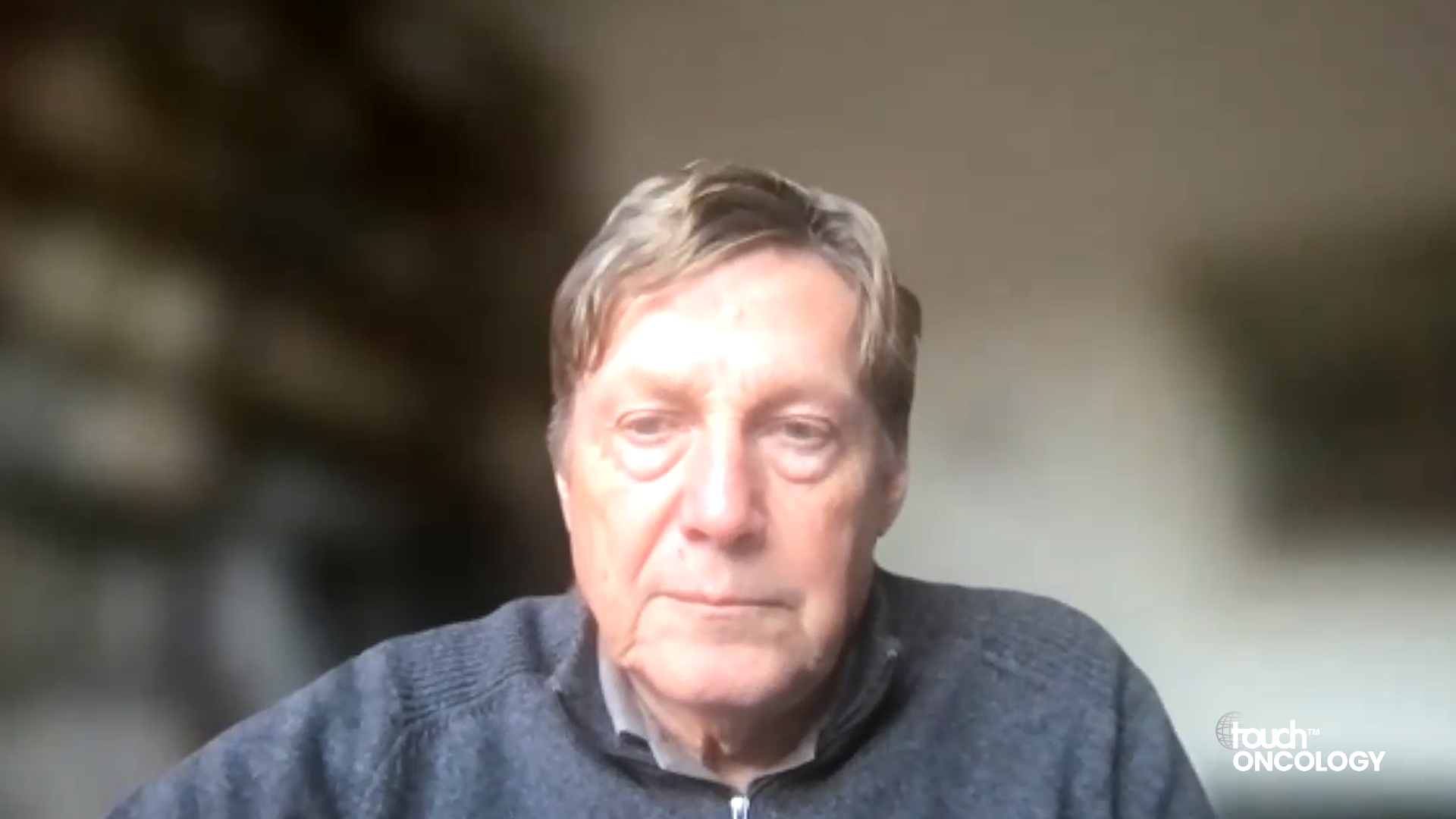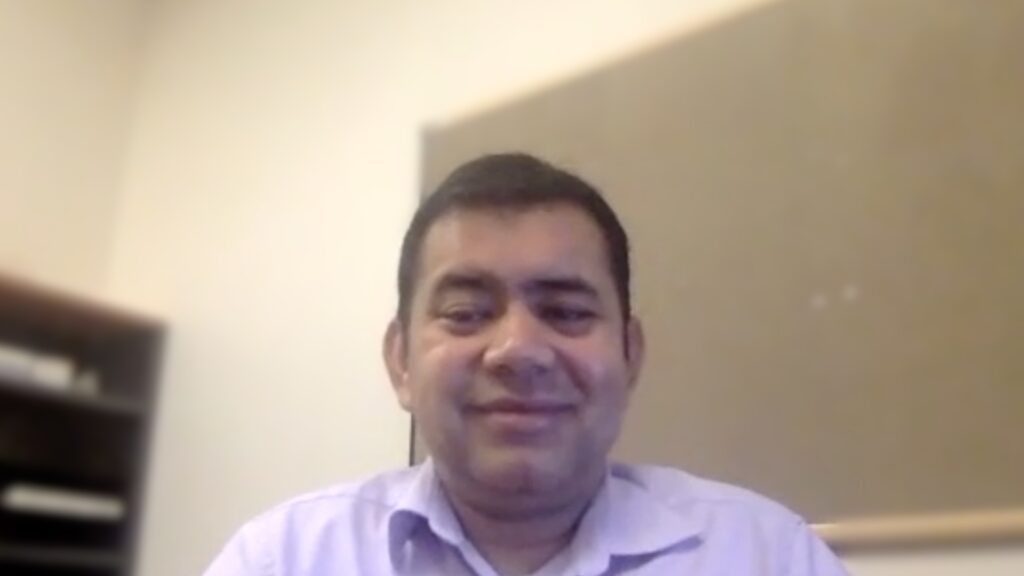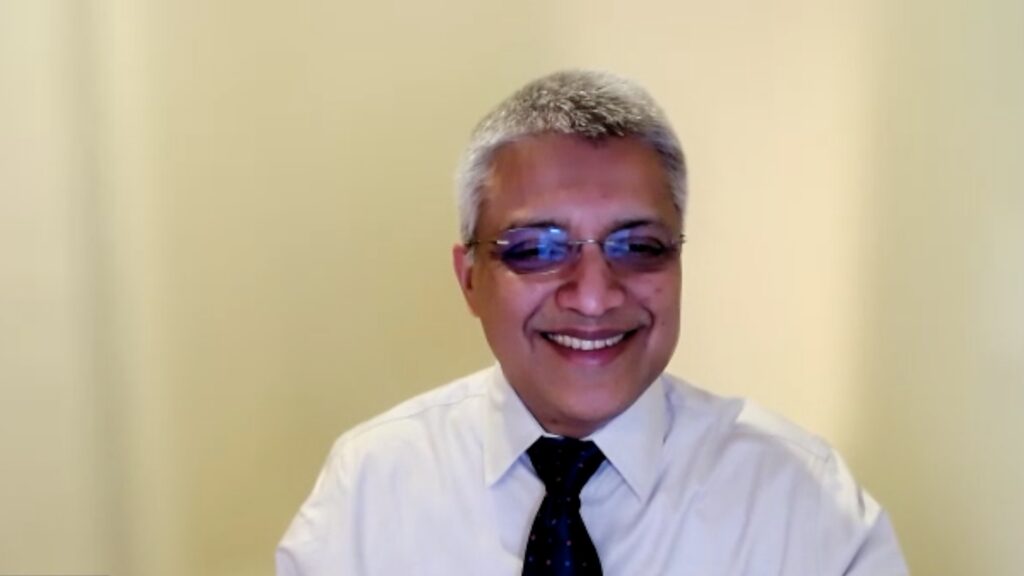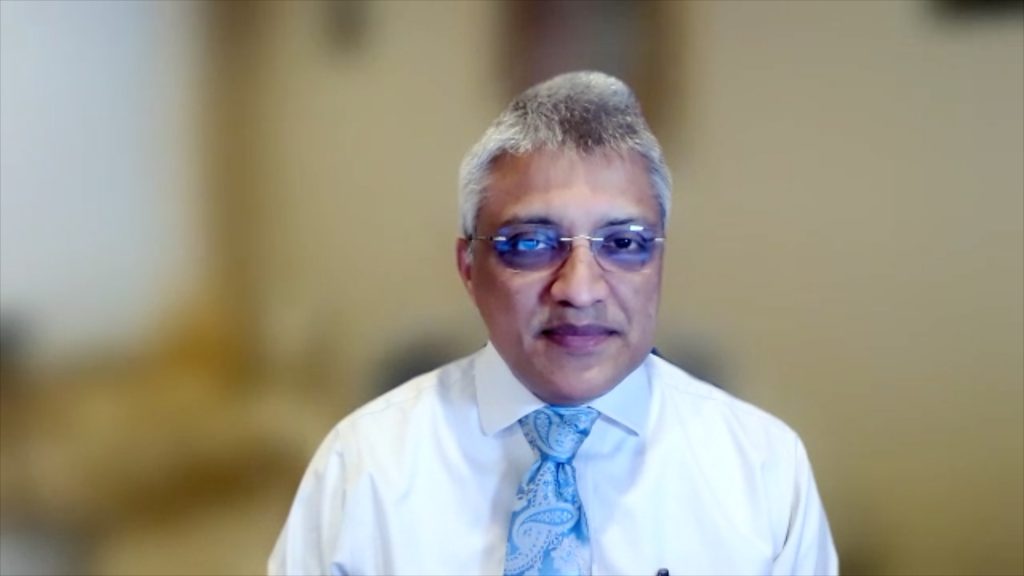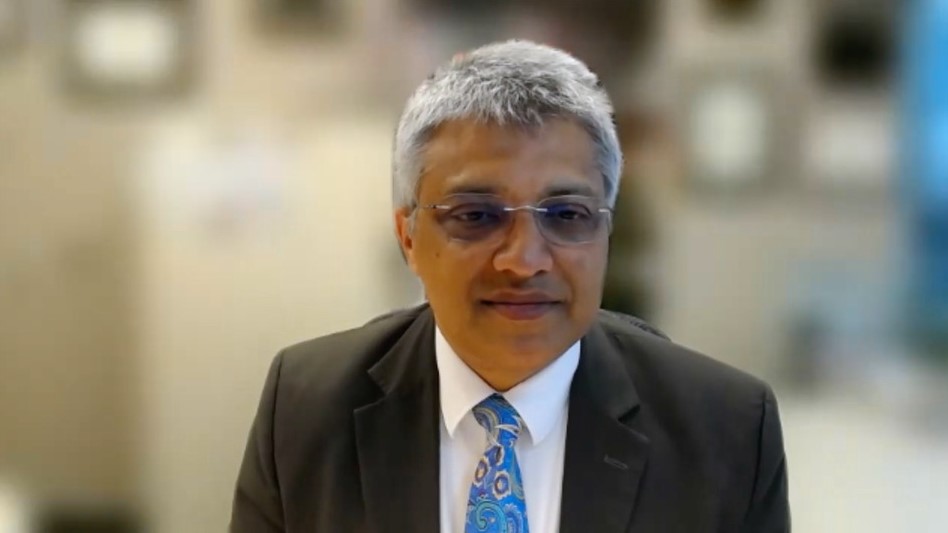Lenalidomide is a standard of care in multiple myeloma. But with the prevalence of the lenalidomide-refractory population increasing, the CARTITUDE-4 trial aimed to assess ciltacabtagene autoleucel for this patient population. In this touchONCOLOGY interview, we speak with Dr Binod Dhakal (Medical College of Wisconsin, Milwaukee, WI, USA) to discuss the mechanism of action of ciltacabtagene autoleucel, the CARTITUDE-4 trial and the clinical significance of the findings.
The abstract entitled ‘First phase 3 results from CARTITUDE-4: Cilta-cel versus standard of care (PVd or DPd) in lenalidomide-refractory multiple myeloma’ was presented at the American Society of Clinical Oncology Annual Meeting, 2–6, June 2023.
Questions:
- What is the prevalence and prognosis of lenalidomide-refractory multiple myeloma? (00:19)
- What is the mechanism of action of ciltacabtagene autoleucel? (01:57)
- What are the aims, design, and eligibility criteria of the CARTITUDE-4 trial? (02:49)
- What was the primary endpoint and how well was it achieved? (05:29)
- What is the potential clinical significance of these findings? (10:29)
Disclosures: Binod Dhakal is a consultant for Genentech, Janssen, and Pfizer, reports honoraria from Arcellx, BMS, GSK, Janssen, Karyopharm, Natera and Sanofi, and is a speaker’s bureau participant with BMS, Janssen, Karyopharm and Sanofi.
Support: Interview and filming supported by Touch Medical Media. Interview conducted by Danielle Crosby.
Filmed as a highlight of ASCO 2023
Access more content on Multiple Myeloma here
Transcript:
Q. What is the prevalence and prognosis of lenalidomide-refractory multiple myeloma?
There is widespread use of lenalidomide and it is just standard of care treatment for maintenance for newly diagnosed myeloma patients, both transplant-eligible and ineligible patients. So in the USA, lenalidomide is extensively used as maintenance, and that pattern is evolving in non USA settings as well.
If you look at the real-world setting, about 2–10% of patients for both transplant-eligible and ineligible patients who are in that one to three prior lines of therapy, are refractory to lenalidomide. But when you look at the patients involved in the clinical trial, there was a study that looked at the patients on the clinical trial, about 70% of patients were refractory to lenalidomide who are exposed to that agent. So the prevalence of lenalidomide-refractory population is pretty big, and that proportion is increasing in the early line setting. This is because of the same thing that I mentioned, why this bridge is used during maintenance for both transplant-eligible and transplant-ineligible patients. Most of the patients receive as a first-line therapy, the proteasome inhibitors, immunomodulators, and now, anti-CD38 antibodies, especially for the transplant in eligible patients. That pattern is also changing for transplant-eligible patients with use of these three classes of drugs. All of these drugs are given and followed by len maintenance. So I think that the prevalence of that len-refractory population is increasing.
Q. What is the mechanism of action of ciltacabtagene autoleucel?
Ciltacabtagene autoleucel is a BCMA-directed CAR-T therapy. As compared with the other CAR-T therapies, this is a dual target. So it binds to two epitopes on the BCMA target. Perhaps that leads to increased affinity and avidity to the receptor. As with other CAR-T cells, there is engagement of the T-cells, which are engineered T-cells, to the cancer cell, to BCMA and after that, lead to the killing of the cancer cell to multiple mechanisms, and that is how it works. The main distinguishing feature is the dual targeting or the dual binding of the epitope of the BCMA.
Q. What are the aims, design, and eligibility criteria of the CARTITUDE-4 trial?
CARTITUDE-4 is the first phase III study that evaluated ciltacabtagene autoleucel or cilta-cel versus standard of care. The two effective standard of care treatments in patients who were lenalidomide-refractory and had one to three prior lines of therapy.
It is the largest study, and the primary endpoint of this phase III study was progression-free survival. There are a number of secondary endpoints that were also assessed in this study, for example, response rates, both overall response rate and complete response rate, MRD negativity rates, overall survival, the safety, cilta-cel pharmacokinetics and patient reported outcomes.
The inclusion criteria in this study included patients who were refractory to lenalidomide and having one to three prior lines of therapy. Prior autologous transplant and prior allogeneic transplant were allowed, as long as they are within a certain time frame. For example, if they are 6 months post-allogeneic transplant and they are 12 weeks post-autologous transplant, they were allowed. But the patients with prior CAR-T or prior BCMA-targeted therapies were excluded.
The patients were randomized into 1:1 fashion to either receive cilta-cel or the standard of care treatment. The standard of care treatment that was chosen in this study is two highly effective regimens called daratumumab, pomalidomide and dexamethasone or DPd, or pomalidomide, bortezomib, and dexamethasone called PVd.
Prior to screening, the physician will determine in the study what regimen the patient would go to in the standard of care arm, either PVd or DPd. In the cilta-cel arm, the patient goes to apheresis and then goes to bridging therapy, and nearly 40% follow a cilta-cel infusion. In the bridging therapy, it is the same as the standard of care arm. It is very important to note that it is the same as the standard of care arm, either PVd or DPd that is also based on fees and choice. So the protocol does not mandate particular regimen of the standard of care regimen, either in the standard of care arm or bridging therapy arm. But it has to be one of those two and has to be decided by the physician, with the understanding that the physician would choose an appropriate non-cross resistant regimen based on the prior exposure and refractoriness. So, the patient on the standard of care arm will continue the treatment until progression, whereas patients in the cilta-cel arm receive the single cilta-cel infusion and are followed up afterwards.
Q. What was the primary endpoint and how well was it achieved?
The primary endpoint of the study was progression-free survival and we saw that the study met its primary endpoint. That means cilta-cel significantly reduced the risk of disease progression or death versus standard of care by 74%. So that is very impressive. Now the hazard ratio is 0.26. This is one of the best and this is the best hazard ratio that has even been reported in this patient population in a randomized setting. And the median PFS was not reached in the cilta-cel arm and is about 11.8 months in the standard of care arm. So the standard of care arm performed as expected. So that is the two regimens that were used, daratumumab, pomalidomide and dexamethasone or pomalidomide, bortezomib, and dexamethasone. They were approved based on the two trials called APOLLO and OPTIMISMM trial, and the patients in this arm performed as expected as what was seen in those two trials.
The 12-month PFS rate in the cilta-cell arm was 76% and in the standard of care arm was 49%. We also saw that this PFS benefit was consistently seen across all subgroups. So there are certain subgroups that I would like to highlight, which is a very difficult to treat patient population. For example, patients with high-risk cytogenetics, patients with soft tissue plasmacytomas, patients with triple-class refractory disease and number of lines of therapy. So in all these key subgroups, we saw a significant benefit of cilta-cel versus standard of care. We also saw, say, less a little to higher response rate and deep responses including higher MRD negativity. So if you just look at the intent to treat population, the overall response rate was 85% in the cilta-cel arm versus 67%. When you look at the complete response or better, it was 73% versus 22%. And the MRD negativities were 61% versus 16%. So this is an intent to treat population. Now in this study, about 176 patients were treated with cilta-cel as a study treatment. Now if you look at that patient population, the overall response rate was very, very impressive at 99%. And with the complete response rate of 86% and better and sorry, complete response and better of 86% and MRD negativity at 72%. And looking at the patients in terms of 12-month PFS, just looking from the time of apheresis, it was 90%. So what it tells us is that in the study, the cilta-cel is highly effective in providing a very deep response and durable responses. And if you look at just treated patients, the response rate, and the depth of response are very impressive, you know, in this patient population.
In terms of safety, if you look at the whole population, the intent to treat population, the safety profile in cilta-cel are consistent with what we have seen with this product. Most of the side effects, the great threefold treatment emerged in adverse effects, you know, were observed in both arms, both in the standard of care arm and the cilta-cel arm and they are mostly haematologic and recovered by Day 30.
The one thing I would like to highlight is that this study was enrolling during the time of COVID from July 2020 to November 2021, during that time there were a lot of variants of the COVID emerging and we did not have a vaccine, or other effective anti-COVID therapies. So that time, we saw about, unfortunately, 7 patients die because of COVID in the cilta-cel arm, and in the standard of care arm there was 1 patient. Then after that, we also looked at those 7 patients, out of those 3 patients were unvaccinated prior to cilta-cel, and 6 of the deaths that occurred in the cilta-cel arm occurred after 4 months of infusion when the patients are mostly immunosuppressed.
After that, we used the safety measures and, consistent with international guidelines, we introduced that in the study, amended the protocol, and there were no COVID deaths. That could be one reason and the other reason could be that COVID as the overall global risk of the COVID were declining at the time. So this could be a combination of both factors.
In terms of these specific adverse events, we saw very manageable adverse events that could be managed with appropriate supportive care. Grade 3-4 cytokine release syndrome, ICANS, and other delayed neurotoxicities were much lower. And compared to the other study in CARTITUDE-1, using the same product when patients have three or more prior lines of therapy. So all these data suggest that if you use earlier cilta-cel, it is equally effective or maybe even better, but at the same time, it is much safer, seems to be much safer, than when used in the later light.
Q. What is the potential clinical significance of these findings?
As I just mentioned in the efficacy, the cilta-cel was shown to provide a very highly super efficacious response with a manageable safety profile in the patients who are lenalidomide-refractory and one to three prior lines of therapy. The responses provided are deep and durable. Based on this data, we think that cilta-cel could be a new standard of care for patients with lenalidomide-refractory myeloma as early as after first relapse.
Subtitles and transcript are auto generated


